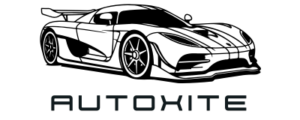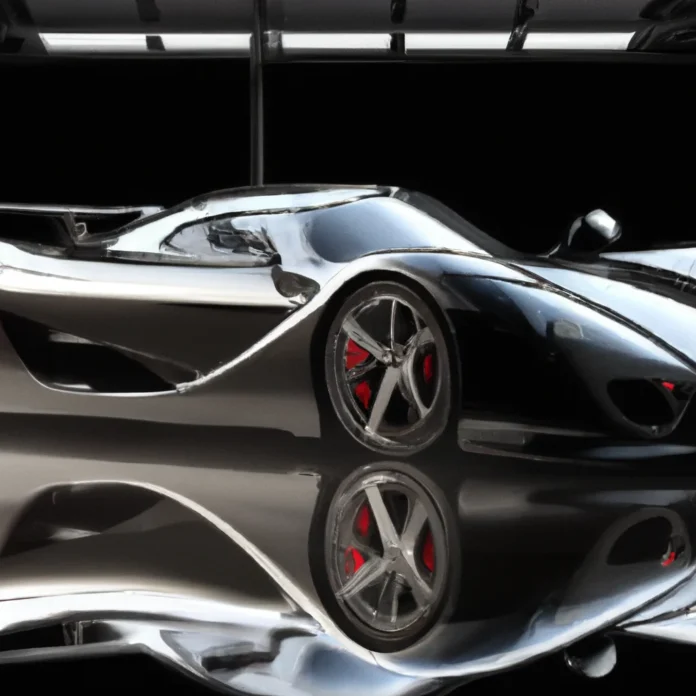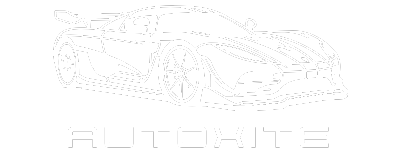Introduction: Understanding the Koenigsegg Phenomenon
The Koenigsegg name instantly conjures images of speed, exclusivity, and technological prowess. These Swedish hypercars often command price tags that leave even seasoned collectors in awe. But what truly goes into the cost of a Koenigsegg, and how does this marque set itself apart in the fiercely competitive world of automotive excellence?
In this article, we examine the tangible and intangible elements that contribute to the real cost of a Koenigsegg, from its handcrafted construction to its relentless pursuit of innovation.
What Makes Koenigsegg Unique in the Supercar World?
Koenigsegg has carved out a unique space in the supercar and hypercar landscape, not just through raw performance but by redefining what is possible in automotive engineering. Their cars are symbols of ambition, blending radical technology with artistic design and obsessive attention to detail.
The History and Legacy of Koenigsegg
Founded in 1994 by Christian von Koenigsegg, the company began with a bold vision: to create the world’s ultimate sports car. From humble beginnings in a small Swedish town, Koenigsegg has grown to become a symbol of innovation and exclusivity.
Milestones in Koenigsegg’s Evolution
Over the decades, Koenigsegg has set numerous world records, from top speed to acceleration, and even environmental milestones with their biofuel-compatible engines. Each breakthrough has reinforced their reputation for pushing the envelope.
Notable Koenigsegg Models Over the Years
The brand’s journey includes iconic models such as the CC8S, the Agera RS, and the revolutionary Regera. Each model reflects a leap forward in design, engineering, and performance, cementing Koenigsegg’s place at the pinnacle of automotive achievement.
Koenigsegg’s Philosophy: Innovation Above All
Central to Koenigsegg’s ethos is relentless innovation. The company’s culture encourages risk-taking and a willingness to challenge industry norms, resulting in cars that are not only fast, but also technologically advanced and meticulously crafted.
How Are Koenigsegg Cars Built?
Building a Koenigsegg is a labor-intensive process that combines traditional craftsmanship with cutting-edge engineering. Each vehicle is assembled by hand, with painstaking attention paid to every component.
The Art of Handcrafting: Assembly Process Explained
Skilled technicians assemble Koenigsegg cars in a specialized facility, working in pristine conditions to maintain the quality and precision required for a hypercar. The process involves custom-fitting body panels, intricate wiring, and the installation of bespoke components, all overseen by master craftsmen.
Materials Used: Carbon Fiber, Titanium, and Beyond
Koenigsegg employs advanced materials such as carbon fiber monocoques, titanium fasteners, and aerospace-grade alloys. These materials contribute not only to the car’s structural integrity but also to its lightweight construction, enhancing both performance and safety.
Why Is Koenigsegg So Expensive?
The price of a Koenigsegg reflects the convergence of rare materials, advanced engineering, and a philosophy that prioritizes quality over quantity. Each car represents thousands of hours of labor and years of research and development.
Breaking Down the Base Price of a Koenigsegg
The base price of a Koenigsegg typically starts in the millions, justified by the small production runs, proprietary technology, and the immense resources invested in every model. Assembly, material sourcing, and engineering all contribute to the initial cost.
How Does Koenigsegg Pricing Compare to Other Hypercars?
When compared to rivals such as Bugatti, Pagani, or Ferrari’s special projects, Koenigsegg’s pricing is competitive—though often higher due to its rarer output and greater degree of customization. For a detailed perspective on how one Koenigsegg model stands out, we examined the real-world value of the Koenigsegg Jesko Absolut.
What Factors Influence Koenigsegg Pricing?
Multiple elements shape the final price of a Koenigsegg, extending beyond materials and assembly to include exclusivity, technology, and the allure of owning a piece of automotive history.
Research and Development Costs
Koenigsegg invests heavily in research and development, pioneering new technologies such as camless engines and hybrid powertrains. These efforts require extensive testing and prototyping, which are reflected in the final price.
Limited Production Numbers and Exclusivity
With production often limited to a handful of units per year, scarcity drives demand—and price. Owners are buying not just a car, but entry into an elite club with very few members worldwide.
Advanced Technology Integration
Every Koenigsegg is packed with proprietary technology, from active aerodynamics to advanced traction control systems. The integration of these technologies demands both financial investment and technical expertise.
Customization and Personalization Options
Customization is a cornerstone of the Koenigsegg experience. Buyers can specify everything from unique paint finishes to bespoke interiors, further elevating the car’s exclusivity and, of course, its price.
The Role of Performance and Engineering
The relentless pursuit of performance—whether in top speed, acceleration, or handling—requires the finest engineering and materials. This uncompromising approach inevitably increases costs.
How Does Koenigsegg’s Technology Drive Up Costs?
The technology embedded in every Koenigsegg is at the forefront of automotive engineering. Each innovation is meticulously developed and integrated, pushing both performance and cost boundaries.
Engine Innovation: Freevalve Technology and More
Koenigsegg’s Freevalve engine technology eliminates traditional camshafts, allowing for unmatched control over the engine’s breathing and boosting both efficiency and power. Such breakthroughs require significant investment in both hardware and software development.
Lightweight Construction Techniques
The company’s obsession with weight reduction leads to the use of carbon fiber everywhere from the chassis to the wheels. This results in a driving experience that is both visceral and precise, but also costly to produce.
Hybrid and Electric Advancements
In recent years, Koenigsegg has pioneered hybrid and electric systems that deliver instant torque and remarkable efficiency without sacrificing performance. These systems add complexity and expense, reflecting the company’s leadership in sustainable high-performance engineering.
Aerodynamics and Active Systems
Aerodynamic innovation is a hallmark of Koenigsegg design. Active spoilers, adjustable ride heights, and underbody airflow management create a sensation of the car slicing through air with minimal resistance. As experts often say:
“In the pursuit of ultimate performance, every gram and every angle matters. The smallest detail can separate a record-breaker from the rest of the field.”
These systems require precise engineering and extensive testing, contributing to the overall cost.
Inside the Price Tag: A Model-by-Model Breakdown
Each Koenigsegg model represents a unique blend of technology, design, and exclusivity. Below, we outline the features and pricing of the most significant models in the lineup.
Koenigsegg Jesko: Features and Pricing
The Jesko stands as a testament to Koenigsegg’s engineering prowess, featuring a twin-turbo V8, advanced aerodynamics, and a nine-speed Light Speed Transmission. Pricing typically starts above $3 million, depending on configuration. For more details, we’ve outlined the essential facts about Jesko pricing.
Koenigsegg Regera: Features and Pricing
The Regera blends a twin-turbo V8 with three electric motors, delivering over 1,500 horsepower and instant acceleration. Its price reflects this technology, often exceeding $2 million, with final costs shaped by individual customization.
Koenigsegg Gemera: Features and Pricing
As the world’s first four-seat hypercar, the Gemera combines luxury with staggering performance. Its hybrid powertrain and innovative features set it apart, with prices starting around $1.7 million.
Koenigsegg Agera RS: Features and Pricing
The Agera RS, famed for its world-record runs, is a collector’s favorite. With only a handful produced, its value on the secondary market often surpasses its original price, which was around $2.5 million.
Koenigsegg CC850: Features and Pricing
The CC850 pays homage to the brand’s first model, blending classic design with modern engineering. Its price reflects its limited production and heritage significance, typically landing in the $3 million range.
How Much Does a Custom Koenigsegg Cost?
Customization is at the core of the Koenigsegg ownership experience. Buyers can tailor nearly every aspect of their hypercar, with each request impacting the final cost.
Customization Options and Their Impact on Price
Choices for customization are virtually limitless, but each selection—whether aesthetic or performance-focused—adds to the total price.
Bespoke Paint and Interior Choices
From multi-stage paint finishes that shimmer in sunlight to hand-stitched leather and rare materials for interiors, these details allow owners to create a truly personal work of art.
Performance Upgrades and Special Packages
Optional packages may include enhanced aerodynamics, track-focused suspension setups, or even bespoke engine tuning. These upgrades cater to specific driving styles and further differentiate each vehicle.
One-off Commissions: The Ultimate in Personalization
For those seeking absolute exclusivity, Koenigsegg offers the option to commission a one-off vehicle. Such projects involve direct collaboration with the factory’s designers and engineers, resulting in a car unlike any other.
What Are the Hidden Costs of Owning a Koenigsegg?
The initial purchase price is only the beginning. Owning a Koenigsegg comes with several ongoing expenses that prospective buyers must consider.
Insurance Premiums for Hypercars
Insuring a hypercar like a Koenigsegg is a significant expense, with premiums reflecting the car’s value, rarity, and performance capabilities. Specialized insurance providers may require additional security measures and driving experience.
Maintenance and Servicing Expenses
Maintenance is both specialized and costly, requiring factory-trained technicians and bespoke parts. Routine servicing ensures continued performance but demands a substantial financial commitment.
Storage and Security Considerations
Owners often invest in climate-controlled garages and advanced security systems to protect their vehicles. The cost of such facilities can add up, especially for those with multiple high-value cars.
Depreciation and Resale Value
While Koenigseggs often retain value due to their rarity, market fluctuations and new model releases can affect resale prices. Some models, however, have shown impressive appreciation over time.
Taxes, Import Duties, and Registration Fees
Importing a Koenigsegg to certain countries incurs significant taxes and duties, sometimes adding hundreds of thousands to the final price. Registration and luxury car taxes further increase the total cost of ownership.
How Does Limited Production Affect Koenigsegg Prices?
The scarcity of Koenigsegg cars heightens their desirability and, by extension, their price. Limited production is a deliberate strategy, ensuring that each car remains a rare sight on the road.
Exclusivity and Collector Demand
Collectors prize Koenigseggs for their rarity and performance pedigree. This strong demand, combined with limited supply, creates a seller’s market, especially for discontinued or special-edition models.
Waiting Lists and Allocation Process
Prospective buyers often face long waiting lists and a competitive allocation process. Dealers and the factory vet applicants to maintain exclusivity, making the prospect of ownership even more coveted. Those interested in the latest Jesko variants can find further insights in our discussion of allocation and pricing for the Jesko Attack.
Are Koenigseggs a Good Investment?
Many buyers view Koenigsegg cars as more than just vehicles—they see them as investments. But how do these hypercars perform in the long term?
Historical Appreciation of Koenigsegg Values
Certain models have experienced remarkable appreciation, particularly those produced in very limited numbers or with unique specifications. Auction results often exceed original purchase prices, highlighting their investment potential.
What Influences Future Value Retention?
Several factors shape future value, including production numbers, historical significance, and the model’s reputation among enthusiasts. Maintenance history and originality also play significant roles.
Comparing Koenigsegg to Other Hypercar Investments
Compared to brands like Bugatti or Pagani, Koenigseggs often command higher premiums on the secondary market, thanks to their rarity and technological leadership. For those weighing their options, our analysis of headline-grabbing Koenigsegg values offers further perspective.
The Buying Process: What to Expect When Ordering a Koenigsegg
Purchasing a Koenigsegg is an experience tailored to the individual, from the initial inquiry to the moment the car arrives.
From Inquiry to Delivery: Steps Involved
The process begins with reaching out to an authorized dealer or the factory. Buyers then configure their car, finalize specifications, and submit their order. Production timelines vary, with each car built to the owner’s exact wishes.
Dealing with Authorized Dealers and Factory Direct
Depending on location, buyers may work directly with Koenigsegg or through a select network of authorized dealers. Both options offer a high level of service and transparency.
Financing and Payment Options
While many buyers purchase outright, Koenigsegg and its dealers can facilitate specialized financing or leasing options for qualified clients. Payment structures are typically staged, with deposits and progress payments throughout the build process.
How Does Koenigsegg Support Its Owners?
Beyond the sale, Koenigsegg provides a robust support network for its owners, ensuring that the ownership experience matches the car’s exclusivity.
Warranty and After-Sales Service
Each car comes with a comprehensive warranty and access to factory-trained technicians. Mobile service teams can travel worldwide to provide maintenance and repairs, minimizing downtime.
Exclusive Owner Events and Experiences
Koenigsegg organizes private events, track days, and factory tours for its owners, providing opportunities to connect with fellow enthusiasts and experience their vehicles in unique settings.
Community and Brand Loyalty
Owners often develop a strong sense of community, sharing experiences and insights. Koenigsegg fosters brand loyalty through continuous engagement and a commitment to exceeding expectations.
How Does the Koenigsegg Price Reflect Brand Philosophy?
Every aspect of Koenigsegg pricing mirrors the brand’s unwavering commitment to excellence and innovation. The cost is a direct reflection of the company’s values and its refusal to compromise.
Pursuit of Perfection: No Compromises
Koenigsegg’s approach is uncompromising. Every component, material, and process is chosen for its ability to deliver the best possible outcome, regardless of cost.
Innovation as a Core Value
Innovation drives every decision at Koenigsegg, from engine design to aerodynamics. The brand’s willingness to invest in unproven technologies is a testament to its forward-thinking philosophy.
What Does the Future Hold for Koenigsegg Pricing?
The future of Koenigsegg pricing will be shaped by evolving technologies, market trends, and the brand’s ongoing pursuit of the extraordinary.
Upcoming Models and Expected Price Trends
As Koenigsegg continues to innovate, new models are likely to command even higher prices, reflecting their cutting-edge features and limited availability.
Impact of EV Technology and Sustainability
The integration of electric and hybrid technology is reshaping the hypercar landscape. Koenigsegg’s ongoing investments in sustainability will likely influence both the cost and appeal of future models.
How Will Global Market Dynamics Influence Prices?
Economic factors, shifting regulations, and changes in global demand will all play roles in shaping future Koenigsegg prices. Adaptability will be key to maintaining the brand’s leadership position.
Frequently Asked Questions About Koenigsegg Price
Prospective buyers often have questions about the purchasing process, affordability, and value retention of Koenigsegg cars. Here, we address some of the most common inquiries.
Can You Negotiate the Cost of a Koenigsegg?
Negotiation is rare, as prices are generally fixed due to limited supply and high demand. However, options and packages can sometimes be tailored to suit individual preferences and budgets.
Is There a Waiting List for New Models?
Yes, most new Koenigsegg models have waiting lists. The length depends on the specific model and production schedule, with some buyers waiting years for delivery.
Are Used Koenigseggs More Affordable?
While some pre-owned Koenigseggs may be less expensive than new models, many appreciate in value, especially those with unique specifications or limited production numbers. For a deeper look at how pricing trends affect specific models, see our coverage of Jesko Absolut price expectations.
Conclusion: Is a Koenigsegg Worth Its Price?
The true cost of a Koenigsegg extends far beyond its sticker price. It encompasses world-class engineering, relentless innovation, and a level of exclusivity that few brands can match. For those who value artistry, technology, and rarity, the investment is justified by the unparalleled experience of ownership.
At Autoxite, we believe that understanding the factors behind Koenigsegg pricing empowers enthusiasts and collectors alike. For more insights and expert guidance on the world’s most exclusive cars, visit Autoxite.


